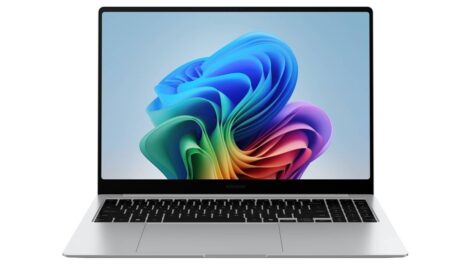
The Rise of Microsoft’s ARM Advantage
The heart of this story lies in the performance of Microsoft’s new Surface laptops equipped with the Qualcomm Snapdragon X Elite chip:
- These ARM-powered Surface devices are outperforming their Intel and AMD counterparts in the Surface lineup.
- The benchmarks indicate a significant leap in performance for Windows machines using ARM architecture.
- This development marks a potential turning point in Microsoft’s hardware strategy and the Windows ecosystem as a whole.
Surface vs. MacBook Air: A New Competitive Landscape
One of the most intriguing aspects of these benchmarks is how the new Surface laptops compare to Apple’s MacBook Air:
- The ARM-powered Surface laptops outperform the MacBook Air in most benchmark categories.
- This performance edge is particularly noteworthy given Apple’s reputation for efficiency and performance with its M-series chips.
- The comparison suggests that Microsoft has made significant strides in optimizing ARM chips for Windows.
This development could potentially shake up the mid-range laptop market, offering consumers a compelling Windows-based alternative to the popular MacBook Air.
MacBook Pro: Still the Performance King
While the Surface laptops show impressive performance, it’s important to note their limitations:
- The benchmarks indicate that these new Surface devices don’t quite match the performance of higher-end MacBook Pro models, particularly those from the previous year.
- This suggests that Apple still maintains an edge in the high-performance laptop segment.
- For users requiring top-tier processing power, the MacBook Pro remains a go-to option.
Implications for the Laptop Market
The performance of Microsoft’s ARM-powered Surface laptops has several important implications:
1. Increased Competition in the Mid-Range Segment
- Consumers now have more options when looking for high-performance, energy-efficient laptops.
- This competition could drive innovation and potentially lead to more competitive pricing.
2. The Growing Importance of ARM Architecture
- The success of these Surface laptops further validates the potential of ARM architecture in mainstream computing.
- This could accelerate the development of ARM-optimized software for Windows.
3. Potential Shift in Consumer Preferences
- Users who prefer Windows but were drawn to MacBooks for their performance might now have a viable alternative.
- This could impact market share dynamics between Windows and macOS devices.
4. Pressure on Intel and AMD
- The strong performance of ARM chips puts additional pressure on traditional x86 processor manufacturers to innovate.
- This competition could lead to advancements across all processor types, benefiting consumers.
Considerations for Consumers
For consumers in the market for a new laptop, these developments offer new factors to consider:
Performance vs. Ecosystem
- While performance is crucial, users should also consider their preferred operating system and software ecosystem.
- The gap in performance between Windows and macOS devices is narrowing, making ecosystem preferences potentially more significant.
Software Compatibility
- Potential buyers of ARM-powered Windows laptops should check the compatibility of their essential software.
- While the Windows ARM ecosystem is growing, it may not yet match the maturity of the x86 Windows or Apple Silicon macOS environments.
Future-Proofing
- The strong performance of ARM chips in both Windows and macOS devices suggests this architecture will play a significant role in future computing.
- Investing in an ARM-powered device could provide good long-term value.
The Road Ahead: Challenges and Opportunities
While the benchmarks for Microsoft’s ARM-powered Surface laptops are impressive, several factors will influence their long-term success:
1. Software Ecosystem Development
- Microsoft needs to continue encouraging developers to optimize their applications for ARM architecture.
- The growth of the ARM app ecosystem on Windows will be crucial for widespread adoption.
2. Continued Performance Improvements
- To truly compete across all segments, Microsoft and Qualcomm will need to continue pushing the performance boundaries of ARM chips.
- Catching up to the high-end MacBook Pro performance remains a goal for future iterations.
3. Marketing and Consumer Education
- Microsoft faces the challenge of educating consumers about the benefits of ARM-powered Windows devices.
- Overcoming potential misconceptions about performance and compatibility will be key.
4. Apple’s Response
- Apple is likely to continue innovating with its M-series chips.
- The competition between ARM-powered Windows and macOS devices could lead to rapid advancements in mobile computing technology.
Conclusion: A New Era of Laptop Competition
The impressive performance of Microsoft’s ARM-powered Surface laptops marks a significant moment in the evolution of personal computing. By offering performance that rivals and sometimes exceeds that of the MacBook Air, Microsoft has positioned itself as a serious contender in the high-performance, energy-efficient laptop market.
While Apple’s MacBook Pro still holds the crown in the ultra-high-performance category, the narrowing gap in the mid-range segment signals a more competitive and dynamic laptop market. This competition is likely to drive innovation, potentially leading to better products and more choices for consumers across both Windows and macOS ecosystems.
As ARM architecture continues to gain prominence in the PC world, we may be witnessing the early stages of a significant shift in the laptop industry. For consumers, this means more powerful, efficient, and potentially more affordable options in the coming years. The ultimate winner in this technological race will likely be the end-user, benefiting from the rapid pace of innovation spurred by this renewed competition.










Add Comment